There is a popular adage amongst bikers (both the motor and pedalling kind) that says that while four wheels move the body, two wheels move the soul. There are few joys like travelling by bike. Travelling by way of pedal power is about the freedom of the open road, the intimacy of exploring new places, and of course the healthy, active lifestyle that comes along with it.
Biking takes travel to a whole new level. You have the option of bikepacking – turning your bike into your primary mode of transportation for your adventure, or you could simply bring your bike along with you on vacation, to use for city exploration or longer rides.
In this post, we will look at the practicalities of travelling with a bicycle.

Now, you could spend a fat chunk of $$$ on the WRONG present for someone. Wrong size hiking boots, wrong fit backpack, wrong shape sleeping bag… As any adventurer will tell you, gear is a personal choice.
So give the adventurer in your life the gift of convenience: buy them an REI Co-op gift card! REI is The Broke Backpacker’s retailer of choice for ALL things outdoors, and an REI gift card is the perfect present you can buy from them. And then you won’t have to keep the receipt. 😉
Buy on REI!How To Travel With a Bike
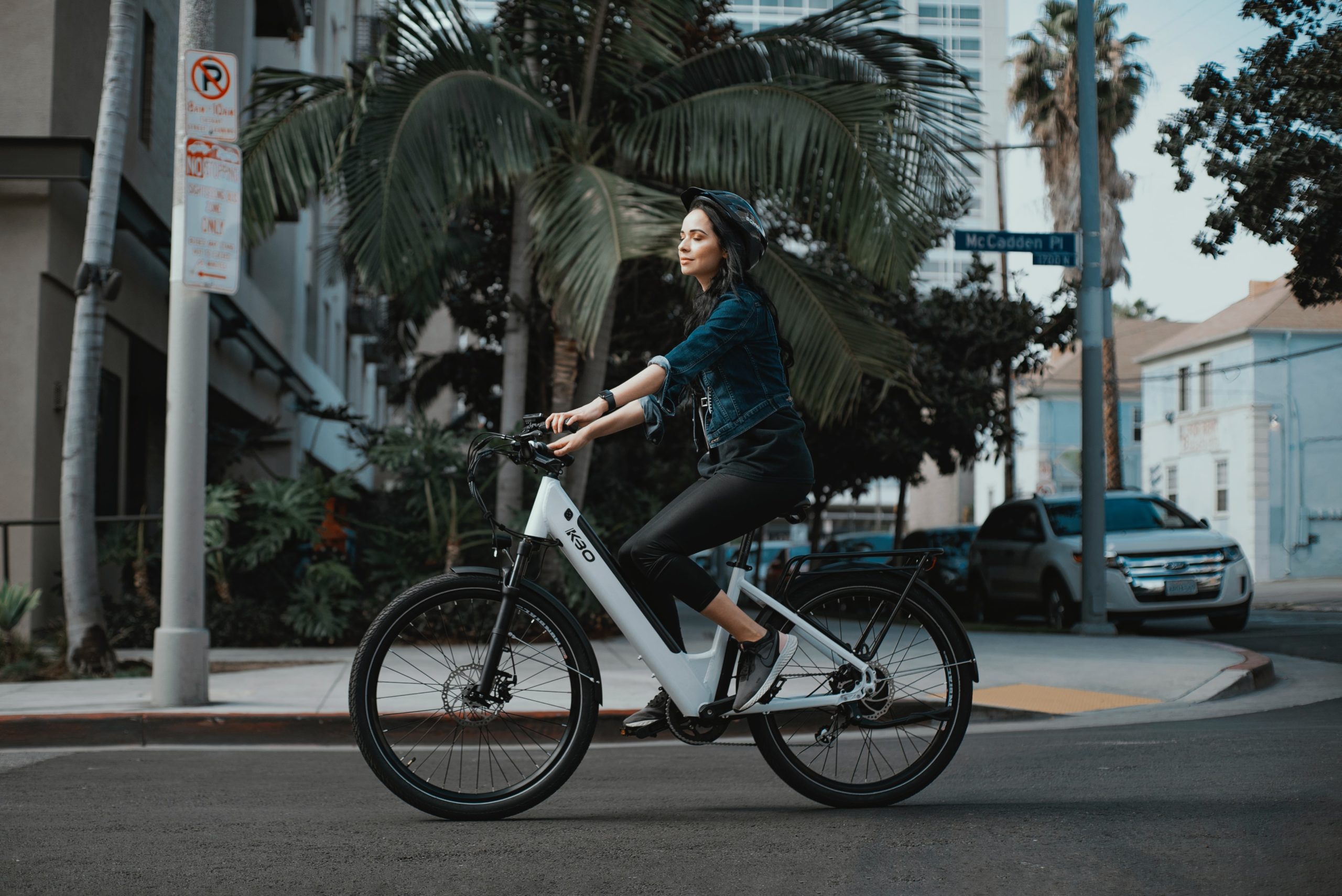
So, you’ve been through all the different options and picked out the best bikepacking bike for your trip …
The first step in planning a trip with your bike is working out exactly how the hell you are going to transport it. Different modes of travel require different preparations, and the rules, costs, and practicality can vary significantly. Let’s take a look.
On Trains
The good news is that trains are often very bike-friendly. In many cases, you can bring your bike on the train for little or no extra charge. However, this does vary from one train company to another, so it is essential to try and check the specific bike policy in advance.
The safety and practicality of bike travel by train can depend on the facilities available for storing bikes on the train and at stations. Personally, whenever I bring my bike onto a train I try to sit within eyesight of it.
On Buses
Bus companies also tend to have varying policies on bikes. Some will allow them at no extra charge, while others require a fee and then some outliers do not permit them at all. The safety and practicality of bus travel with a bike can depend on the storage options provided by the bus company.
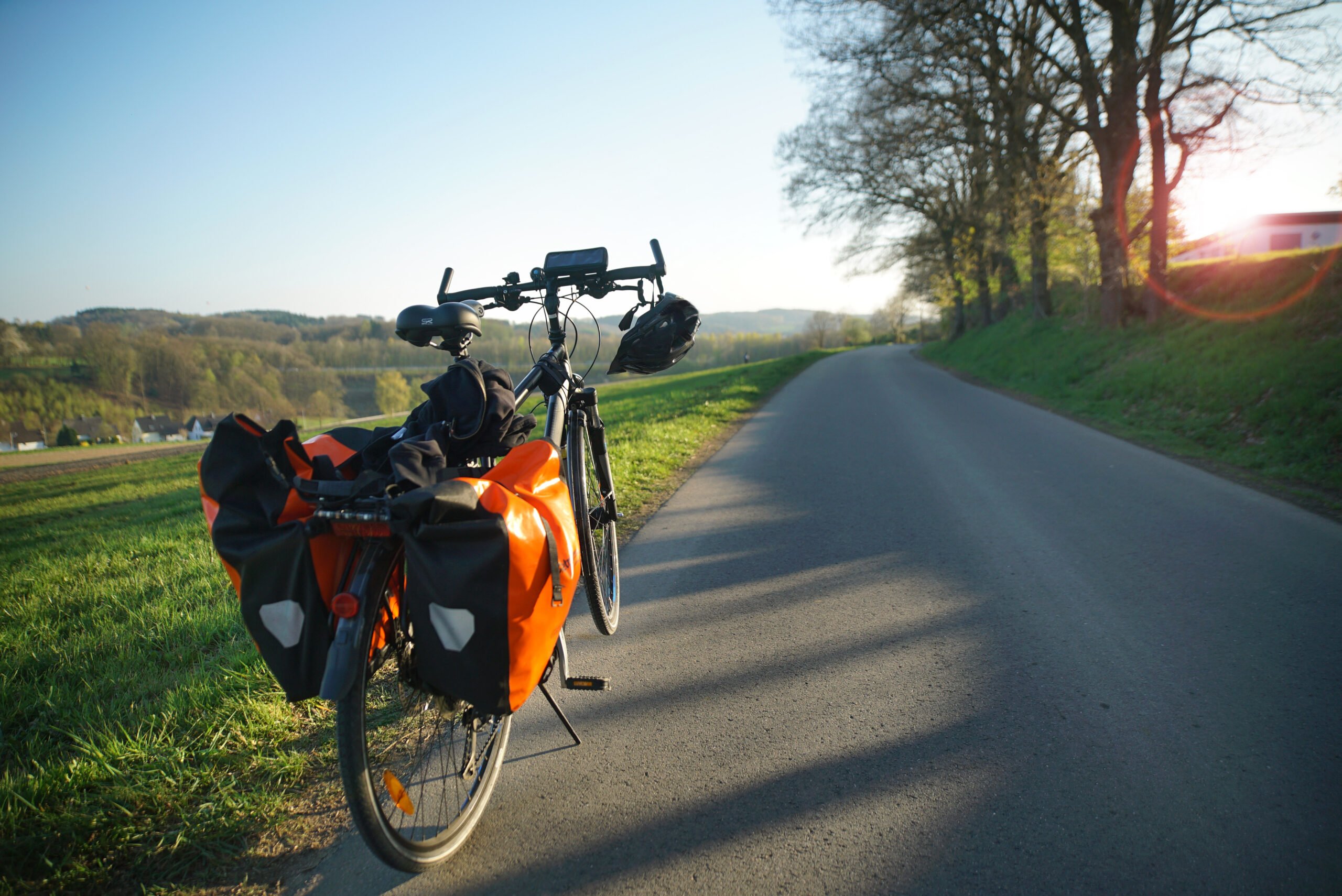
On Planes
Travelling with a bike by plane can prove to be more challenging and more costly. Bikes are typically (almost always) considered oversized luggage and as such are subject to additional fees. If your bike is worth under $200, then the transport fees may well cost as much as the bike is worth itself!
They also need to be packed properly to prevent damage during transport. Airlines have strict guidelines on this so again, it’s crucial to check these in advance.
By Car
When travelling by car, options for transporting your bike include roof racks or stowing it in the boot. It is a lot easier to stow it in the boot if you take the wheels off so maybe look for a bike with clip-off wheels if this is your intention.
Both methods have pros and cons in terms of safety, convenience, and potential impact on fuel efficiency. If you are looking for a roof rack, then check out the selection on offer at REI.
Do I Need A Licence To Travel With a Bike?
In most cases, you do not need a licence to travel with a bike. In fact, we cannot think of one destination where it is mandatory to have a licence for a cycle! However, when crossing borders, you by bike you may sometimes need to prove ownership of the bike to avoid complications.
Always have your receipt or another proof of purchase handy when travelling internationally. In some destinations, a well-placed ‘discretionary payment’ may soothe any concerns that zealous border officials might have.
What Insurance Do I Need To Travel With a Bike?
Note that while some travel insurance policies will cover bikes as personal items, many cap their coverage limit, often to around $1,000 and some to $500 per single item.
To ensure your bike is fully insured, you may need to seek additional coverage specifically for your bike. It’s important to read the fine print of any insurance policy and to understand what is covered and what isn’t – for example, some may not cover using your bike in a foreign country which would defeat the whole object!
ALWAYS sort out your backpacker insurance before your trip. There’s plenty to choose from in that department, but a good place to start is Safety Wing.
They offer month-to-month payments, no lock-in contracts, and require absolutely no itineraries: that’s the exact kind of insurance long-term travellers and digital nomads need.
SafetyWing is cheap, easy, and admin-free: just sign up lickety-split so you can get back to it!
Click the button below to learn more about SafetyWing’s setup or read our insider review for the full tasty scoop.
Which Bikes Are Best For Travelling?
When it comes to choosing a bike for travel, I would advise that you look for a model with a light frame and easily detachable wheels. Some examples of travel-friendly bikes include the following selections.
Co-op Cycles ADV 1.1 Touring Bike
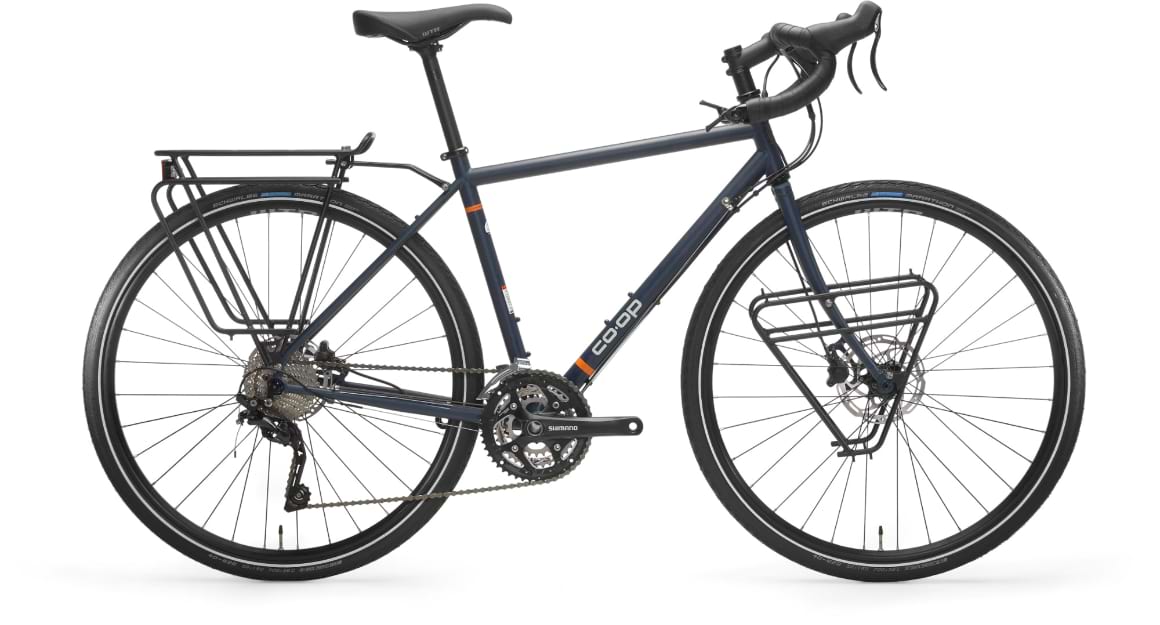
The ADV 1.1 Touring Bike from REI’s Co-op Cycles brand is designed with travel in mind. It boasts a durable steel frame that can handle rough roads and heavy loads, making it ideal for long-distance bikepacking. It also features a variety of mounting points for racks and water bottles. Its disc brakes provide reliable stopping power in all weather conditions.
The downside of this bike for travel is its weight. Being made of steel, it’s heavier than bikes with aluminium or carbon frames, which could make it less convenient for throwing into buses or car roof racks.
Cannondale Quick CX 3 Bike
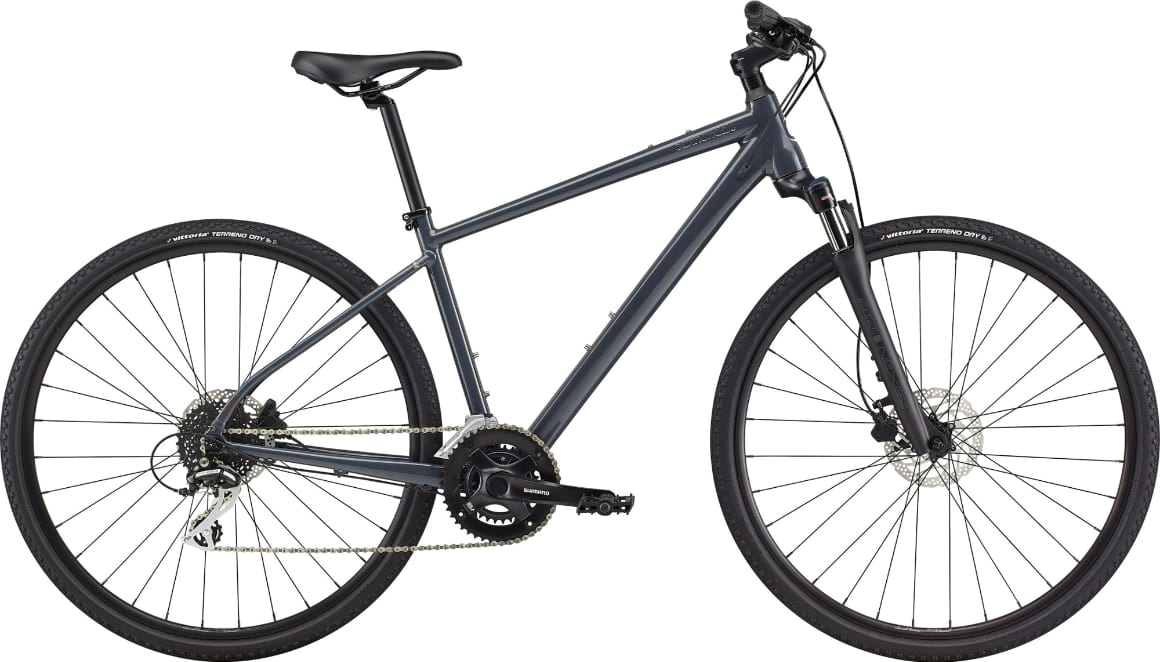
The Cannondale Quick CX 3 is a versatile hybrid bike that could be a good little option for travelling. Its aluminium frame is notably lighter than steel, making it much easier to transport. It also features front suspension to smooth out rough roads or paths so it could suit those rougher roads and trails.
While this bike does not come with a rack, it does have mounting points so you can add one. This could be a great bike for getting around town on vacation or for shorter bikepacking trips that cover mixed terrain. However, for long-distance touring or for very rough trails, you will probably want a bike that’s more specialized.
Salsa Journeyman Claris 700 Bike
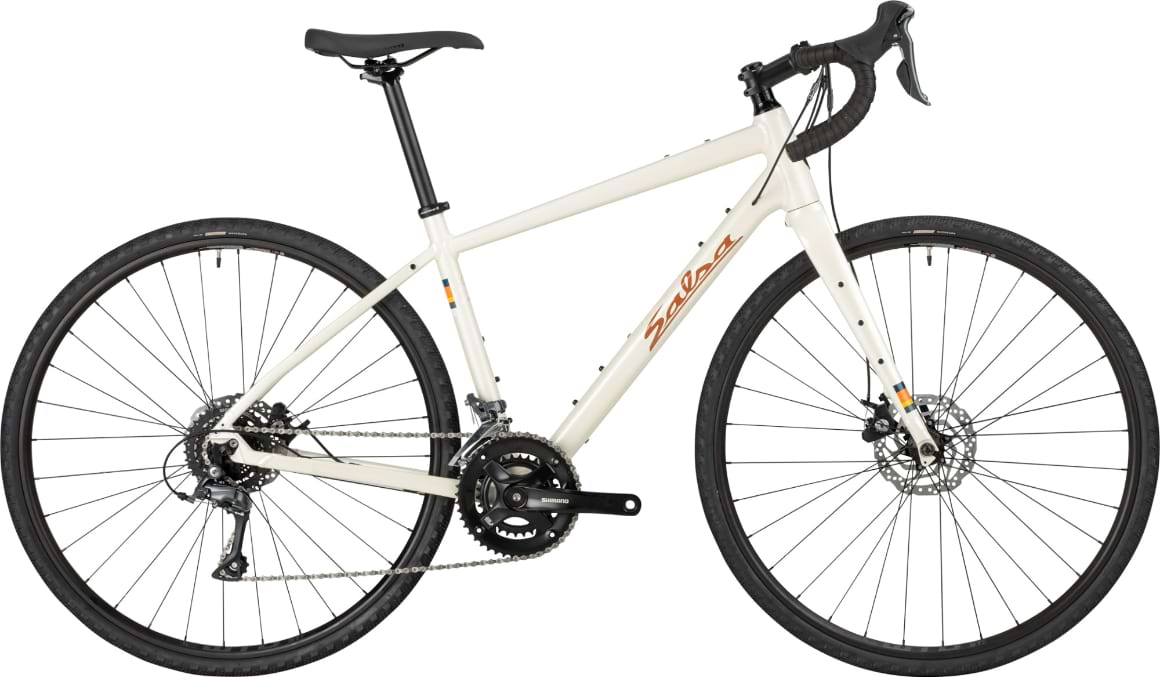
The Salsa Journeyman Claris 700 is a versatile all-road bike with drop bars, providing a balance between speed and comfort. It is built with a lightweight but durable aluminum frame and carbon forks.
The bike includes mounting options for racks and fenders, which makes it a suitable choice for travelers who want to bikepack or tour around. The Journeyman has 700c wheels that are well-suited for pavement and smooth paths but might not be the best choice for those rough trails.
Want a bit of help along the way? We’ve also put together a post on the best electric bikes too.
Bikepacking Vs Travelling With a Bike
As mentioned, bikepacking is when the bike IS the mode of transport. You load it up with your gear and set off on your adventure. On the other hand, traveling with a bike means you transport it to your destination and use it there.
Both have their advantages and unique joys. If you are bikepacking then you will need to invest in some specialised gear including bike bags. You can either check the range of bike bags on offer over at REI, or you can check out our guide to the best bikepacking bags.

REI is one of America’s biggest and most-loved outdoor gear retailers.
Now, for just $30, get a lifetime membership that entitles you to 10% OFF on most items, access to their trade-in scheme and discount rentals.
Join REI Today!FAQs – Travelling With a Bike
1. What kind of bike case do I need for air travel?
The type of bike case you need will depend on the specifics of your bike and the regulations of the airline. Hard-shell cases offer the most protection but are heavier and can be more expensive. Soft-shell cases or padded bags are lighter and often cheaper but provide less protection. Some airlines will accept a bike in a cardboard box, provided it is well-packed and secured. Always check with your airline for their specific requirements.
2. How do I pack my bike for travel?
The best way to pack your bike will depend on the type of case you’re using. Generally, you’ll need to remove the pedals, deflate the tires slightly, and turn or remove the handlebars. In some cases, you may also need to remove the wheels. Wrap each part of the bike with foam or another type of protection to prevent damage during transport.
3. Are there weight limits for traveling with a bike?
Yes, most airlines have weight limits for checked luggage, including bikes. This limit varies by airline and can range anywhere from 50 to 100 pounds. Exceeding this limit may result in additional fees. Always check the weight limits and fees with your airline before you travel.
4. Can I rent a bike instead of bringing my own?
Yes, renting a bike at your destination is often an option and can be a good alternative to traveling with your own bike. However, it’s important to research bike rental options at your destination beforehand to ensure they have the type of bike you want and to compare costs.
Final Thoughts

Traveling with a bike can truly unlock a whole new world of experiences. Whether you’re bikepacking across a whole continent, or just taking leisure rides around your vacation destination, a bike makes a perfect travel companion.
Just remember, the key to a successful bike trip is in the planning. By considering how to transport your bike, what documents you’ll need, investing in a good bikepacking tent and how to insure everything properly, you’ll give yourself a break and set yourself up for a smooth and rewarding journey.
Happy biking peeps!

And for transparency’s sake, please know that some of the links in our content are affiliate links. That means that if you book your accommodation, buy your gear, or sort your insurance through our link, we earn a small commission (at no extra cost to you). That said, we only link to the gear we trust and never recommend services we don’t believe are up to scratch. Again, thank you!






